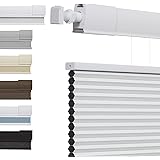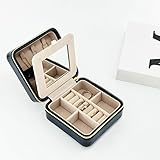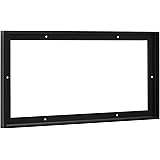The world of DIY electronics can initially seem daunting, with countless components and complex diagrams. For many enthusiasts, the challenge lies not just in understanding the theory but in sourcing and integrating the right parts efficiently into a functional project. Fortunately, the explosion of affordable, pre-packaged smart gadgets has revolutionized the prototyping landscape, offering powerful solutions to common development hurdles.
As touched upon in the video above, leveraging specialized modules can dramatically accelerate project timelines and enhance capabilities. We’re moving beyond mere breadboards and discrete components into an era where robust, intelligent modules simplify intricate tasks, making advanced projects accessible even to those with intermediate skills.
The Core of Connectivity: Foundational Microcontroller Platforms for DIY
At the heart of most sophisticated DIY projects lie microcontroller development boards. These are truly intelligent gadgets, serving as the “brain” that processes inputs and controls outputs for other components.
Platforms like Arduino, ESP32, and Raspberry Pi have become indispensable in the maker community. They provide a versatile ecosystem for programming and interfacing, enabling hobbyists to bring complex ideas to life with relative ease. For example, the ESP32 integrates Wi-Fi and Bluetooth capabilities directly, a critical advantage for Internet of Things (IoT) applications, making it a powerful smart gadget for network-connected projects.
Visual Feedback: Advanced Display Modules for DIY Electronics Projects
Effective interaction with any DIY project often requires visual feedback. The four-digit LED display mentioned in the video serves as an excellent entry point into display technologies, typically operating efficiently on 5 volts, a standard power rail for many microcontrollers.
These displays, often utilizing 7-segment architecture, are remarkably cost-effective, frequently available for under five dollars, and ideal for showing numeric data like sensor readings or timers. Beyond simple numerical displays, modern DIY projects frequently integrate more advanced options such as OLED (Organic Light-Emitting Diode) or LCD (Liquid Crystal Display) modules. These offer greater graphical capabilities and are typically interfaced via serial communication protocols like SPI (Serial Peripheral Interface) or I2C (Inter-Integrated Circuit), minimizing the number of pins required on your microcontroller and streamlining wiring.
Sensing the Environment: Intelligent Sensor Gadgets for Data Acquisition
To create truly smart gadgets for DIY projects, your creations must interact with their environment. This is where a diverse array of sensor modules comes into play, transforming physical phenomena into digital data your microcontroller can interpret.
Common examples include the DHTxx series for temperature and humidity, PIR (Passive Infrared) sensors for motion detection, and ultrasonic sensors like the HC-SR04 for distance measurement. These intelligent components allow projects to react autonomously, whether it’s automating home lighting based on ambient light levels or triggering an alarm upon detecting movement. Integrating these sensors provides the critical input layer for any responsive embedded system.
Taking Action: Actuator Modules and Motor Driver Gadgets
Smart DIY projects don’t just perceive; they act. Actuator modules are the outputs that enable physical interaction with the world. These include servo motors for precise angular control, stepper motors for exact rotational positioning, and relays for switching high-power AC loads using low-voltage DC signals from a microcontroller.
Dedicated motor driver modules are often employed to manage the current and voltage requirements of various motors, protecting the sensitive microcontroller while providing ample power. Utilizing these smart gadgets, makers can construct everything from robotic arms to automated door locks, effectively translating digital commands into tangible actions.
Seamless Communication: Wireless Connectivity Smart Gadgets
The ability to communicate wirelessly is paramount for many contemporary DIY projects, particularly in the realm of the IoT. Integrated modules or standalone boards offering Wi-Fi, Bluetooth, or even LoRa (Long Range) connectivity are essential smart gadgets.
These allow your projects to send data to the cloud, receive commands from a smartphone app, or interact with other devices in a decentralized network. For instance, an ESP32 board natively includes Wi-Fi and Bluetooth, simplifying the development of remote-controlled devices or smart home integrations. This connectivity significantly extends the functionality and accessibility of any DIY creation.
Powering Your Projects: Efficient Power Supply Modules
Reliable power is fundamental to any electronic circuit, and smart power supply gadgets ensure stable operation. While many small modules operate on 5 volts, supplying consistent and efficient power, especially from varied sources like batteries, requires specific solutions.
Voltage regulator modules, buck converters (step-down), and boost converters (step-up) are vital for converting available power into the precise voltage and current required by different components. These modules are designed for efficiency, minimizing power loss and extending battery life in portable DIY electronics projects. Ensuring stable power delivery is critical for the long-term reliability and performance of your smart gadgets.
Beyond the Basics: Advanced Integration with Open-Source Hardware Ecosystems
The true power of modern smart gadgets for DIY projects lies not just in individual components but in the comprehensive open-source hardware and software ecosystem. This includes extensive libraries, active online communities, and abundant documentation, significantly lowering the barrier to entry for complex projects.
This collaborative environment fosters rapid prototyping and encourages innovation. Developers can leverage existing code and design patterns, drastically reducing development time and effort. Such an integrated approach means that even ambitious automation or robotics projects can be tackled by a dedicated hobbyist, thanks to the collective knowledge and accessible resources.
Embracing the vast array of smart gadgets available today fundamentally transforms how we approach DIY electronics projects. These components not only offer specialized functionality but also streamline the development process, fostering innovation and making advanced concepts more approachable. Experimentation with these versatile modules is key to unlocking the full potential of your next creation, making complex systems surprisingly achievable for any enthusiast building smart gadgets for DIY projects.











